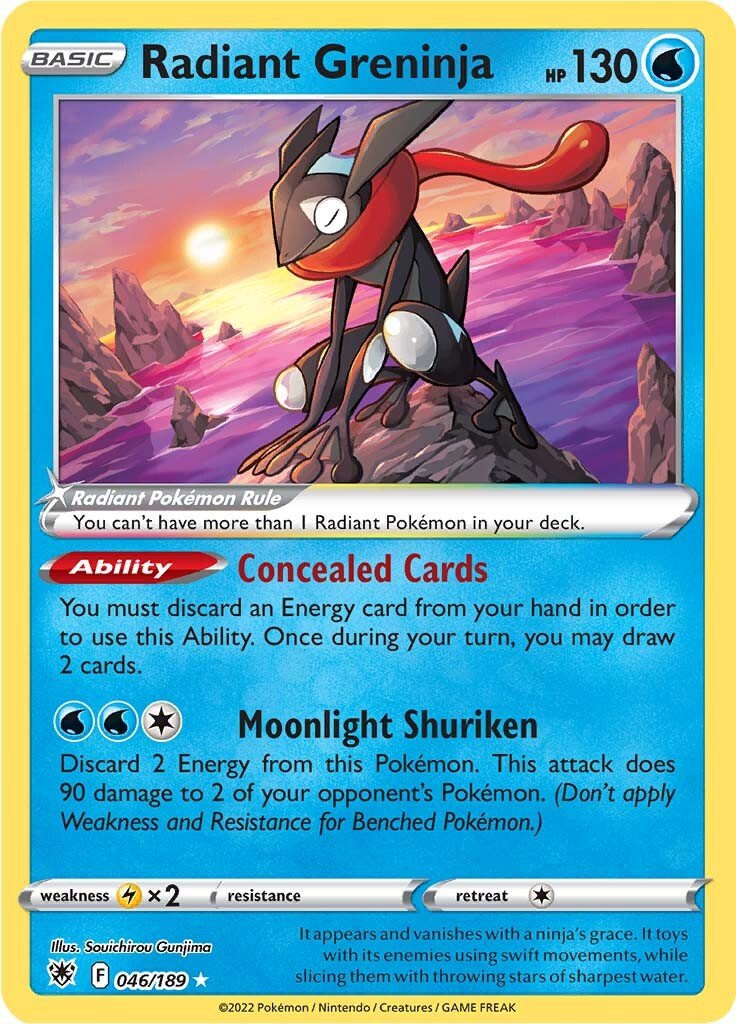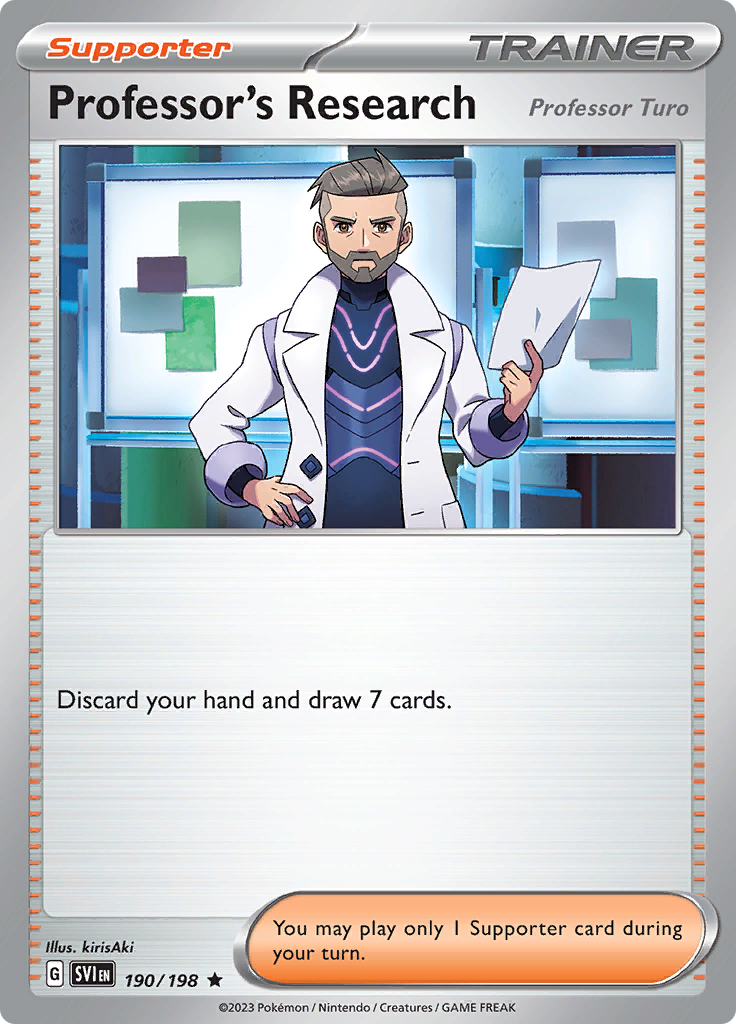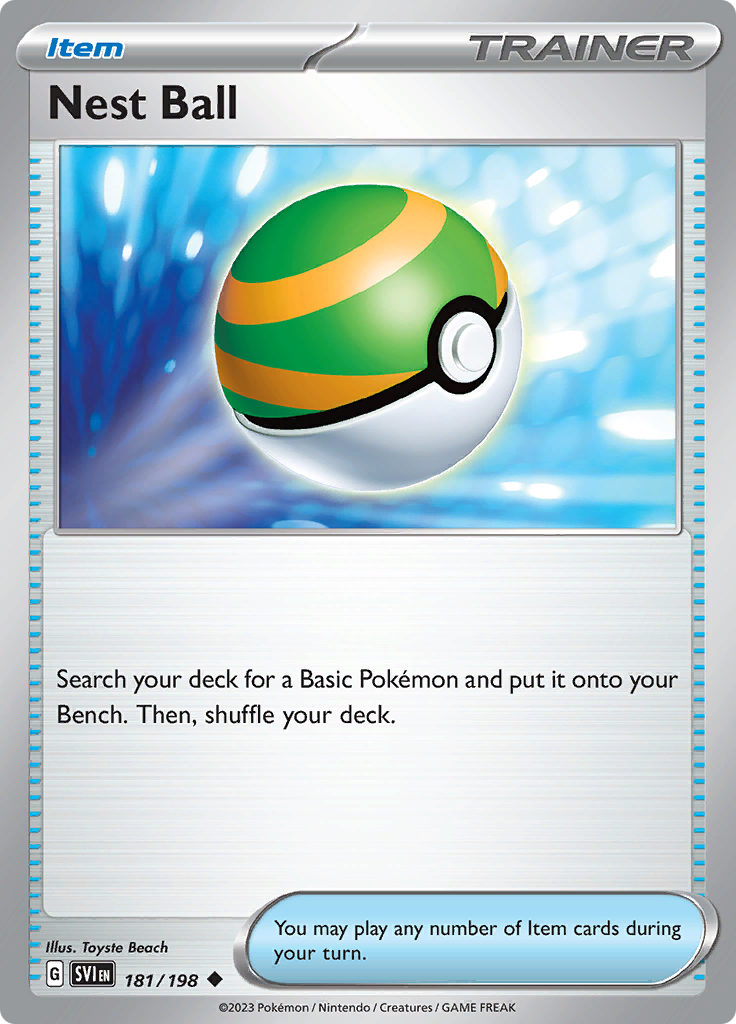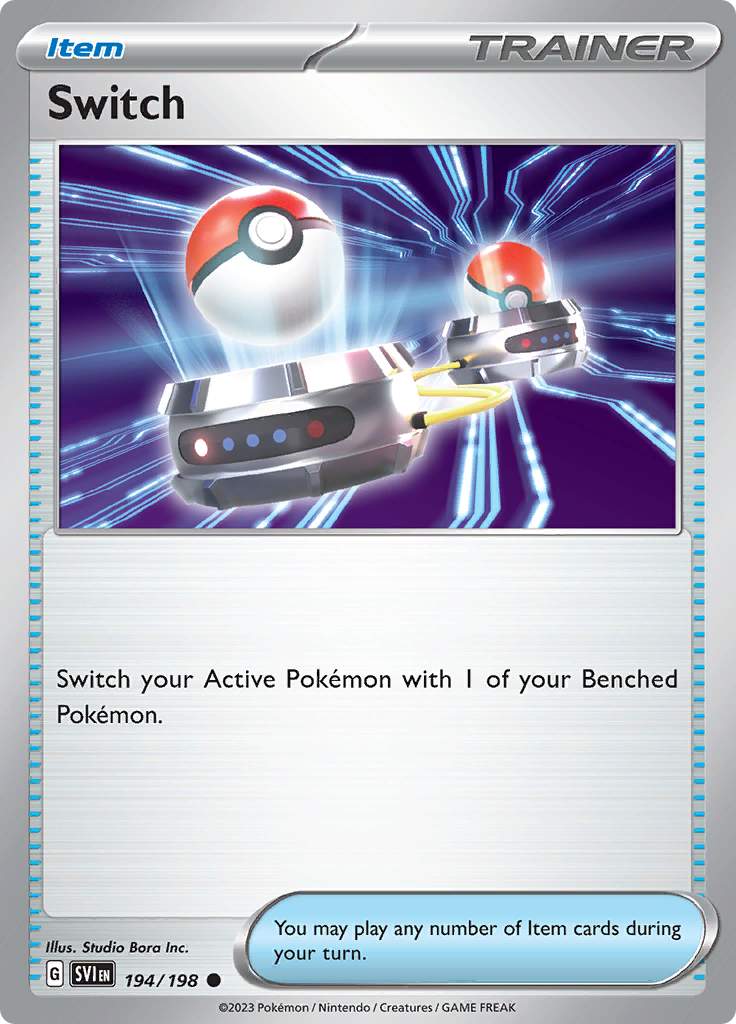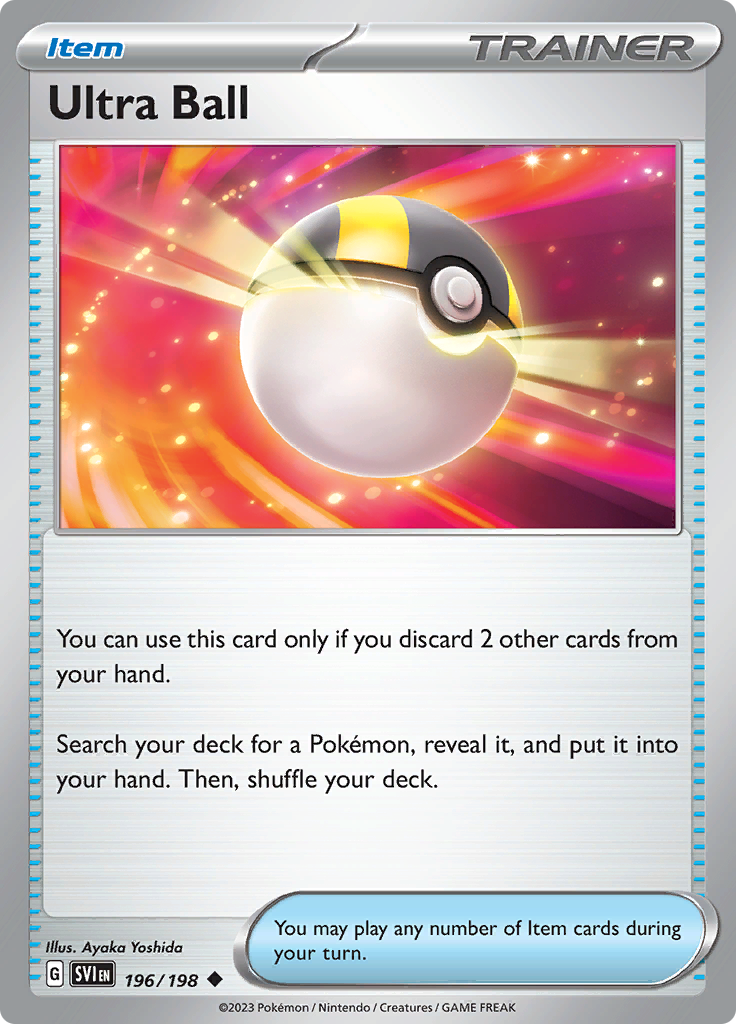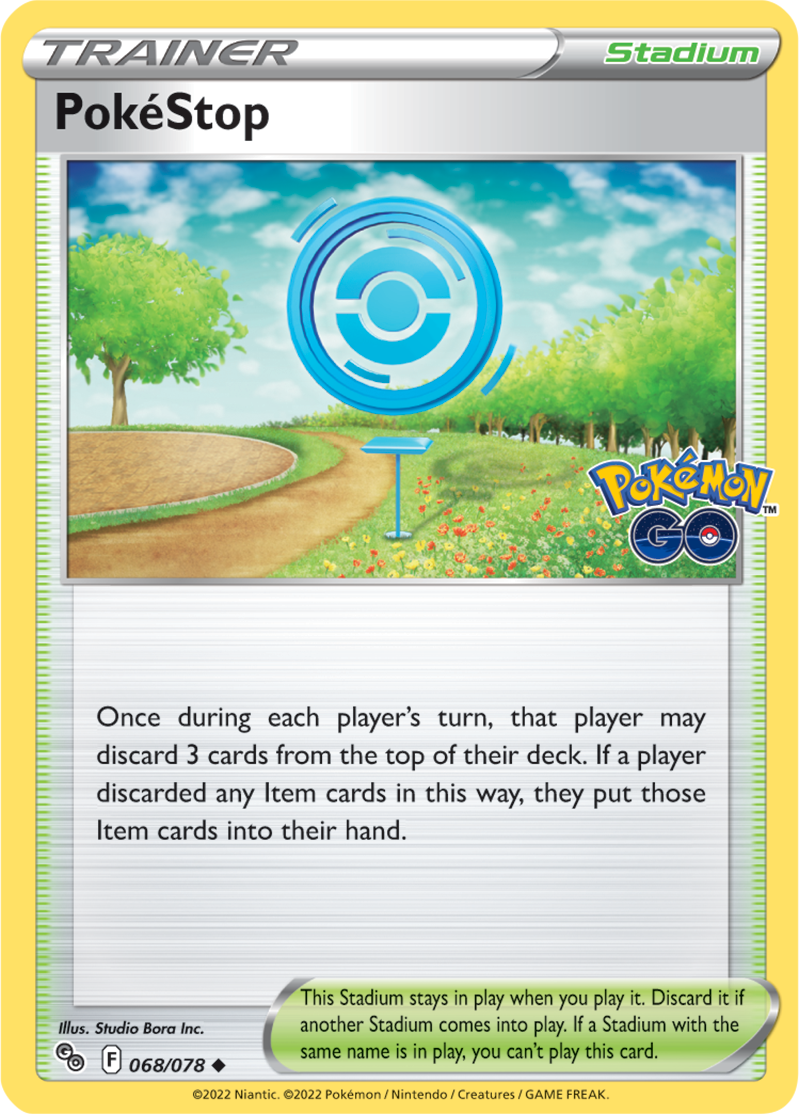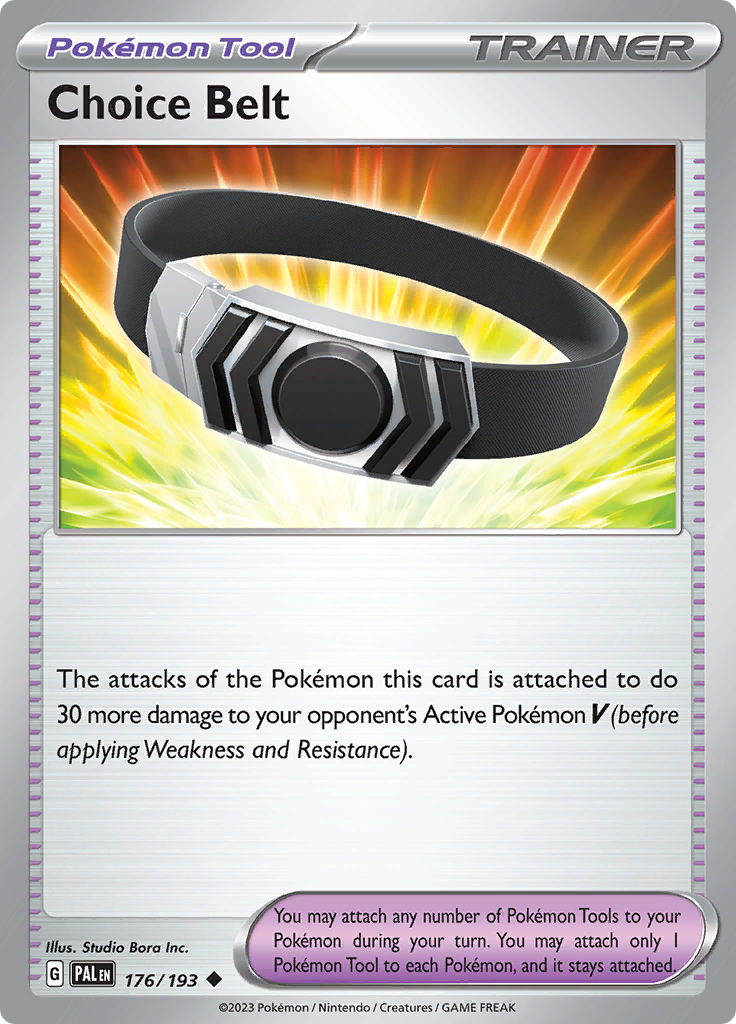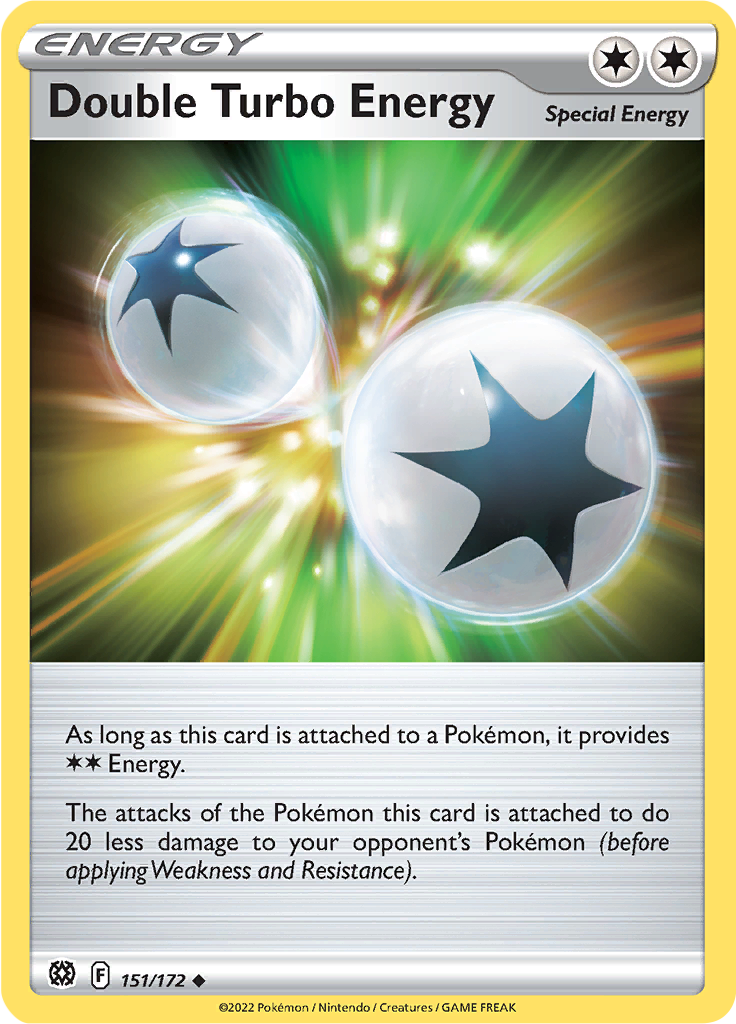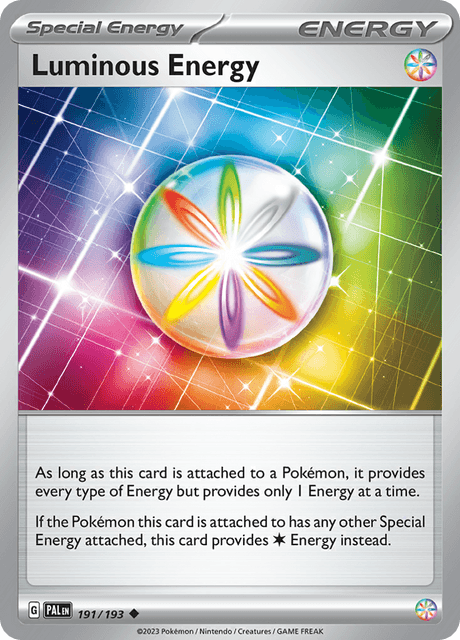Deck Structure
The general breakdown of the cards in a deck by category can be seen below.
General Deck Skeleton
| Pokémon - 20 |
|
| Trainer Cards - 30 |
|
| Energy - 10 |
|
These numbers form the skeleton of the deck: not every deck will follow it exactly—many of the best decks in the Standard Format deviate from the card counts of each main category by plus or minus three cards. Some deviate from it much more radically. However, the general skeleton is a good starting point for how to structure the first draft of your deck. If the deck skeleton of the deck you’re building more or less reflects that of the general deck skeleton, you’re off to a great start!
Pokémon
Pokémon are at the heart of every deck—each Pokémon included in a deck must contribute to the deck’s strategy. Merely being the same type as another Pokémon in the deck isn’t reason enough for a Pokémon to be part of a deck. Every Pokémon—and every card—in a deck must have a critical role to play. Pokémon take one of three main roles in a deck: as the main attacker, as a secondary attacker, or as a utility Pokémon.
Main Attacker
Main Article: The Main Attacker
The Main Attacker is the Pokémon whose primary job is to deal damage to or take damage from the opponent’s active Pokémon. As the focal point of the deck, this Pokémon will directly influence every other card included in the deck.
Secondary Attacker
Main Article: Secondary Attackers
Although not every deck includes one, Secondary Attackers are often critical parts of a functioning deck. A Secondary Attacker often fills in for the roles where the main attacker is either inadequate or even detrimental to the success of the deck’s strategy.
Utility Pokémon
Utility Pokémon are Pokémon that are used for their abilities—or, less often, for attacks—that offer some beneficial effect, aside from merely attacking for damage. While some utility Pokémon are also capable of being damage-dealing attackers themselves, many Utility Pokémon are used expressly for their utility. Because a deck typically never intends to attack with its Utility Pokémon, it will often not include any copies of the necessary energy to use the attacks of its Utility Pokémon.
There is a wide variety of Utility Pokémon in the Standard format, but the Utility Pokémon below are a few of the most popular choices.
Trainer Cards
Trainer cards are what make a deck tick. Including the right Trainer cards in your deck can be the difference between a deck working and a deck failing catastrophically. Because of how important they are, roughly half of a deck is made up of Trainer cards. Each Trainer card serves its own purpose, yet sometimes, two Trainer cards will have very similar effects. If a Supporter card and an Item card share the same effect, the Item card is the better card! Remember, you can only play one Supporter card each turn, but you can play as many Item cards as you like!
Supporter Cards
Most Supporter cards included in a deck either draw you cards or allow you to change your opponent’s Active Pokémon by gusting it into the Active Spot. Any Supporter card included in a deck that doesn’t offer one of these two options should be carefully considered before it is included—remember, you’re trading the effect of that Supporter card with being able to draw more cards! Below are the most popular supporters currently available in the Standard format.
Items
Item cards do all the little things that make a big impact on your deck’s success. The most common use for an Item card is a means to search out the Pokémon from your deck so that they can be put into play quickly, but Item cards provide a wide range of helpful effects, from recovery of Pokémon and Energy to providing a boost to your attacker’s damage. Below are a few of the most popular Item cards in the Standard format.
Stadium Cards
Stadium cards change the field of battle. These cards are often double-edged swords—the effects they provide are available to both players—but because they stay in play when played, they can often be used more than once, unlike a Supporter or Item card. The effects of Stadium cards vary widely—there’s a lot to choose from! Below is a handful of the most popular Stadium cards in the Standard format.
Pokémon Tool Cards
Notice
Older Pokémon Tool cards often have the word "Item" written on them as they were previously considered Item cards. However, following an errata announced with the release of Scarlet & Violet base set, all previously-printed Pokémon Tool cards are longer considered Item cards.
Pokémon Tool cards can be helpful additions to your deck. These cards are similar to Item cards in that you can play more than one each turn. However, unlike Item cards, Pokémon Tool cards offer delayed or perpetual benefits for their attachment. That benefit could be as simple additional damage for your Pokémon’s attacks or as potent as finding any card in your deck during your turn! However you pick your tools, remember that most Pokémon can have just one Pokémon Tool attached to them—so chose your tools wisely! Below is a handful of the most popular Pokémon Tool cards in the Standard format.
Energy
Energy is a critical component of a deck as your Pokémon need Energy to power up their attacks. Including the right balance of energy in your deck can be the difference between powering up your Pokémon and drawing into nothing but energy cards. In addition to Basic Energy cards, Special Energy cards are cards that, in addition to providing energy to power up your Pokémon, provide a beneficial effect. Many decks cannot make efficient use of Special Energy cards, yet others require them to function properly. Below are a few of the most popular Special Energy cards in the Standard format.



